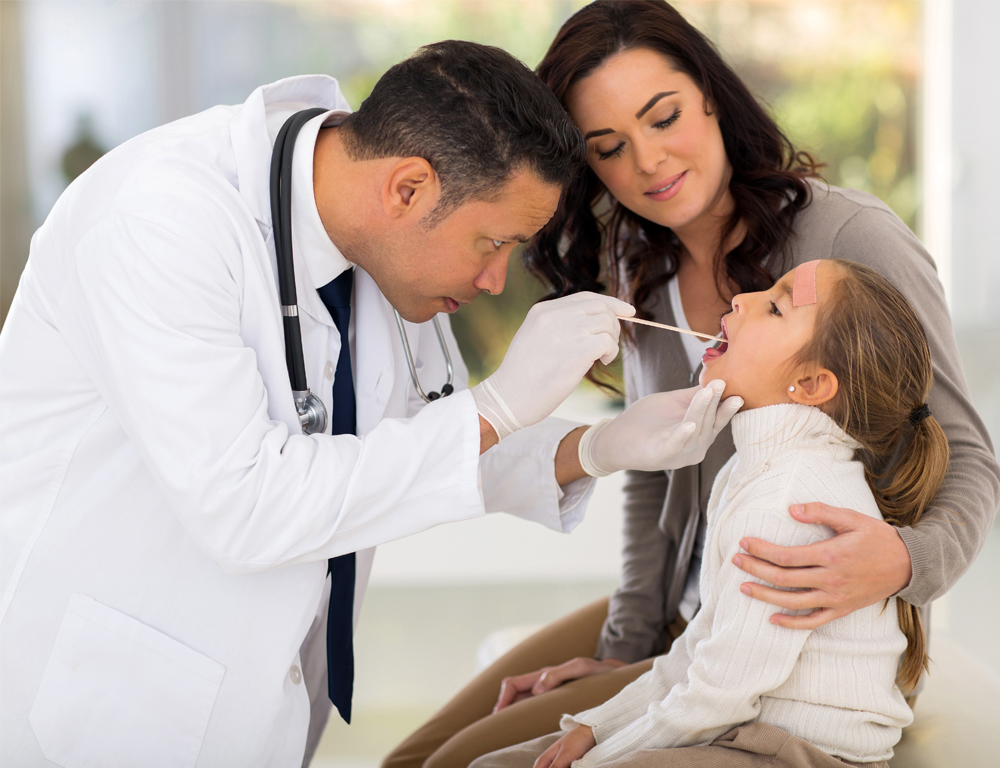The Medical Minute: Preventing the spread of hand, foot and mouth disease

Hand, foot and mouth disease may sound scary to a parent unfamiliar with the condition, but for young children, it's nearly as common – and about as serious – as catching a cold.
The enterovirus that causes the disease is present year-round but becomes more common during the warmer months of the year. The contagious condition is spread mostly through oral and fecal secretions, which are part of daily life for the daycare-aged crowd.
“Young children have all these goobery secretions that are easily spread to one another by sneezing or coughing or by contact with toys they share with other children. A child then rubs their eye, mouth or nose and is infected,” said Dr. George McSherry, chief of the Division of Pediatric Infectious Diseases at Penn State Health Children’s Hospital.
Hand, foot and mouth disease occurs most commonly in infants and young children but can be seen in those up to 10 years of age. Most older children and adults have had the infection and have immunity that keeps them from contracting the virus again.
Although some symptoms of the condition – fever, runny nose, cough, sore throat and decreased appetite – may be mistaken for other illnesses, the telltale signs of hand, foot and mouth are tiny tender blisters in and sometimes around the mouth, as well as on the palms of the hands or soles of the feet.
The blisters can sometimes be confused for chicken pox, which is more active in the winter months and typically shows up on more than just the hands, feet and mouth, McSherry said.
He said treatment typically includes something to alleviate pain and a healthy dose of patience: “Within 24 to 48 hours most people start to feel better, and usually it resolves itself by seven days.”
Prevention involves teaching children and care givers to cover mouths and noses with facial tissue when sneezing or coughing – or with an elbow or arm if no tissue is available. Hand hygiene should be practiced after sneezing or coughing and after disposing of tissues or diapers.
Wallace Greene, director of the diagnostic virology laboratory at Penn State Health Milton S. Hershey Medical Center, said hand, foot and mouth only requires a clinical diagnosis based on symptoms.
Greene said warm weather and lots of children in a given area creates ideal conditions for the disease to spread. “You're out swimming and picnicking and may not be able to wash your hands well,” he said. “Hand sanitizers don't do much against these viruses.”
Keeping toys clean, washing hands frequently – especially after diaper changes and using the bathroom – are about all that can be done to prevent the spread of the disease. Because some children who have it don't display any symptoms and others may remain contagious well after they are over it, it's hard to know when and if a child is exposed to it.
“There is no vaccine for this,” Greene said. “You're going to get it, get over it and be fine. It's just one of those things you get as a kid. Fortunately, it doesn't cause a lot of serious problems. For most people, it's an inconvenience.”
The Medical Minute is a weekly health news feature produced by Penn State Health Milton S. Hershey Medical Center. Articles feature the expertise of faculty physicians and staff, and are designed to offer timely, relevant health information of interest to a broad audience.
If you're having trouble accessing this content, or would like it in another format, please email Penn State Health Marketing & Communications.
